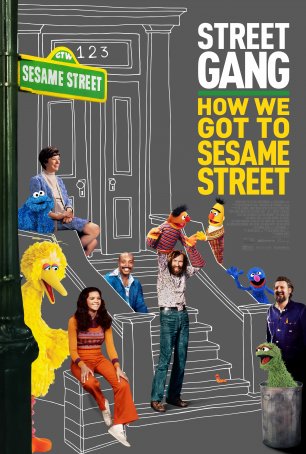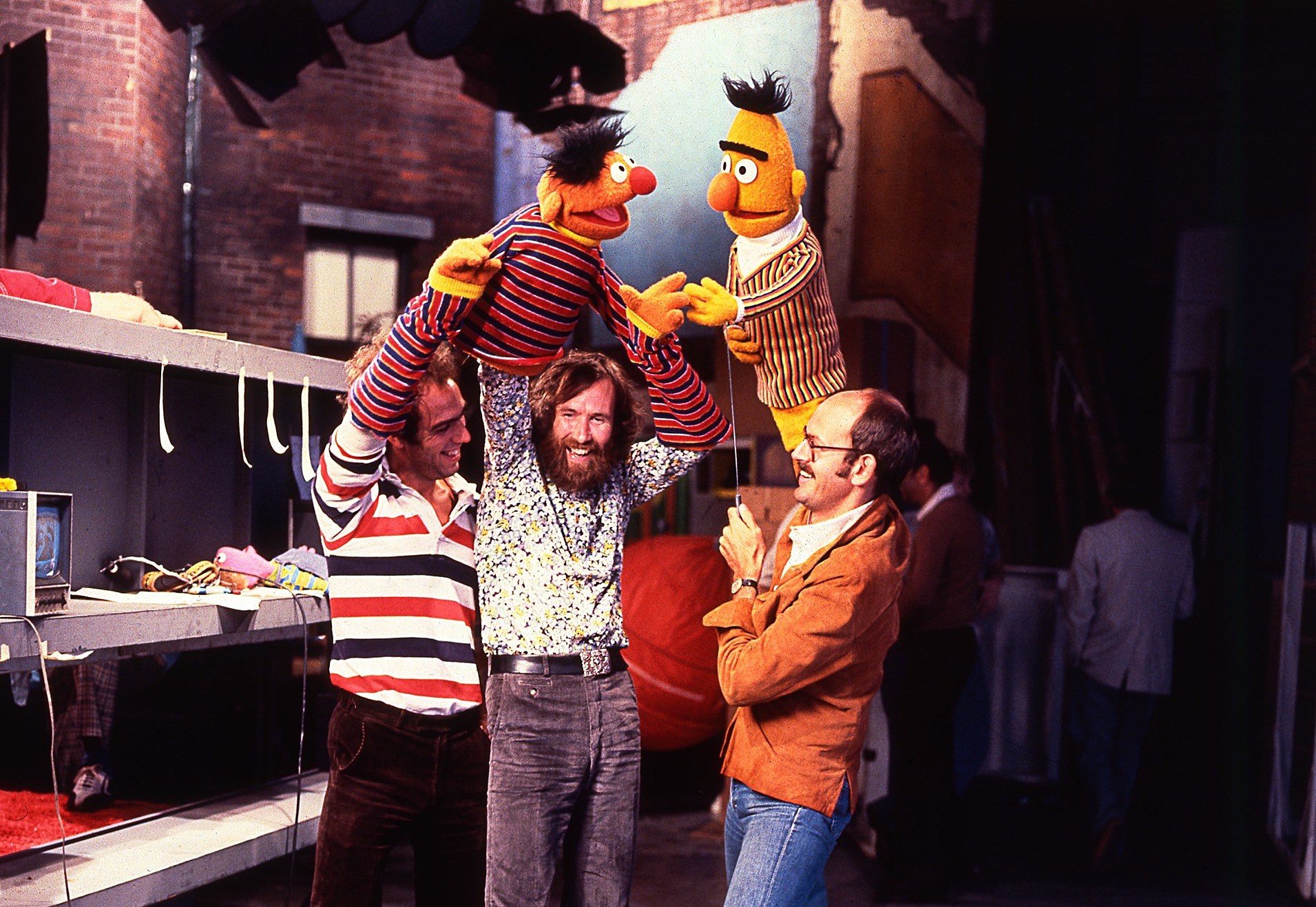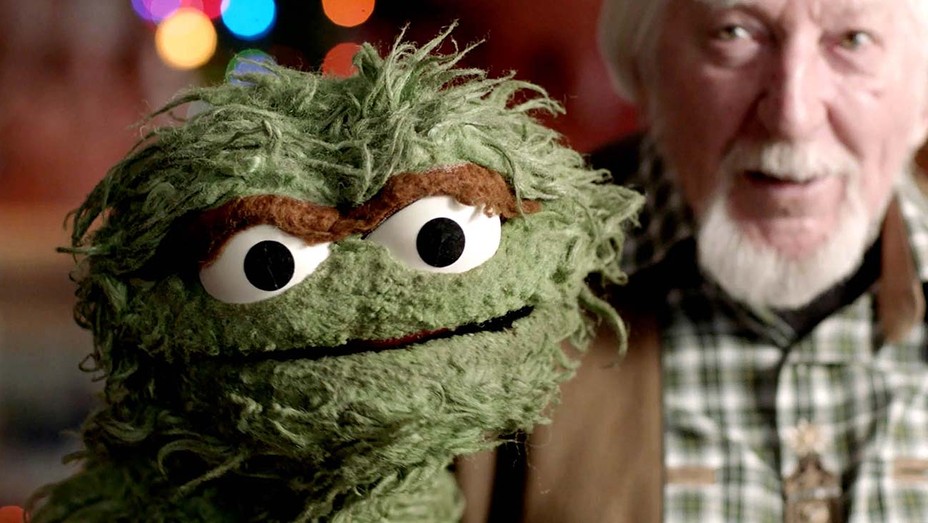Street Gang (United States, 2021)
April 22, 2021
Three years (and seemingly another lifetime) ago, the release of Won’t You Be My Neighbor, a documentary about the defunct TV series “Mr. Rogers’ Neighborhood,” struck a powerfully nostalgic chord with Gen-Xers and Millennials. The simple, straightforward film recalled many of the reasons why the show and its host have retained such a special place in the hearts and memories of many even though it has been nearly 20 years since the last first-run episode aired. For those who were children in the 1970s and 1980s (in particular), “Mr. Rogers’ Neighborhood” was often inextricably paired with the other PBS powerhouse of educational programming, “Sesame Street.” Street Gang, which recounts the gestation and genesis of the still-running quinquagenarian show, may cause some of the same fond stirrings as Won’t You Be My Neighbor.
Although the movie skips around quite a bit in its attempts to piece together the building blocks that resulted in “Sesame Street” reaching screens in 1969, three people in particular are in the crosshairs of filmmaker Marily Agrela (loosely adapting the non-fiction book written by Michael Davis): Joan Ganz Cooney, Jon Stone, and Jim Henson. Of those three, only Cooney is alive and a newly filmed interview with her is one of Street Gang’s foundation stones. Stone and Henson are represented by a combination of archival material and new interviews with family members. The film also spends time recounting the contributions of others, as well: Frank Oz (Henson’s right-hand man and occasional foil), Joe Raposo (the composer responsible for many of the show’s most notable songs, including the main theme, “Sing,” and “Bein’ Green”), and the “original Gordon,” Matt Robinson. In addition to providing excerpts from interviews with more than 20 “talking heads” (including many of the surviving members of the original cast), Street Gang offers dozens of clips from old episodes, the aggregate of which will result in a long trip down memory lane for many viewers.
 The purpose of Street Gang isn’t to provide a
retrospective of the show’s half-century of history. New interviews excepted,
the movie stops with Jim Henson’s 1990 funeral and most of the material
predates that event by more than a decade. The movie is interested in the
factors that led to “Sesame Street” coming into being and the difficulties
encountered by its makers during its first few years. Success stories like its
surprise acceptance by parents and children alike across the social and racial
spectrum (it was targeted especially toward poor inner-city children) are
balanced with failures like the schism that developed between Robinson and the
producers.
The purpose of Street Gang isn’t to provide a
retrospective of the show’s half-century of history. New interviews excepted,
the movie stops with Jim Henson’s 1990 funeral and most of the material
predates that event by more than a decade. The movie is interested in the
factors that led to “Sesame Street” coming into being and the difficulties
encountered by its makers during its first few years. Success stories like its
surprise acceptance by parents and children alike across the social and racial
spectrum (it was targeted especially toward poor inner-city children) are
balanced with failures like the schism that developed between Robinson and the
producers.
If you watched “Sesame Street” as a child in the ‘70s, you were probably unaware of how political the program was with is inclusive, progressive agenda. Joan Ganz Cooney wasn’t interested in producing just another generic children’s program. She wanted something substantive. That resulted in her bringing Jon Stone on board. Their mandate was that, because pre-school children watched huge amounts of television (sometimes comprising more than 50% of their waking hours), why not make the experience worthwhile? Instead of the empty mental calories of most ‘60s-era kiddie shows (which were often thinly-veiled commercials for products sold by sponsors), Cooney and Stone intended to make something that could help prepare children (especially those living in impoverished areas) for kindergarten.
One of film’s most interesting anecdotes relates to the stance taken by the Mississippi PBS member station. In 1970, “Sesame Street” was banned due to the show’s depiction of a racially integrated neighborhood. (Of the early cast, three members – Bob, Linda, and the irascible Mr. Hooper – were white. Three – Gordon, Susan, and David – were black and two – Luis and Maria – were Hispanic.) Negative national feedback and local opposition resulted in commercial TV stations airing the program until the PBS outlet changed its position and allowed the program to be broadcast. Like many of the other behind-the-scenes offerings presented in Street Gang, this provides a greater understanding of the difficulties encountered by Cooney and Stone in developing and delivering what would eventually become one of PBS’ hallmark series.
 While most of Street Gang is lighthearted and there
are numerous opportunities to laugh (some of the outtakes feature language that
would never make it to the screen in a children’s show, although it is tame
enough to allow the film to retain a PG rating), a few tears may also be shed.
Although the majority of the film follows the show during its first handful of
years, there are two jumps ahead to important events in the early history of
“Sesame Street.” The first includes an edited excerpt from the Thanksgiving
1983 episode in which Mr. Hooper’s death is revealed and discussed. The second
skips forward seven years to Jim Henson’s untimely passing.
While most of Street Gang is lighthearted and there
are numerous opportunities to laugh (some of the outtakes feature language that
would never make it to the screen in a children’s show, although it is tame
enough to allow the film to retain a PG rating), a few tears may also be shed.
Although the majority of the film follows the show during its first handful of
years, there are two jumps ahead to important events in the early history of
“Sesame Street.” The first includes an edited excerpt from the Thanksgiving
1983 episode in which Mr. Hooper’s death is revealed and discussed. The second
skips forward seven years to Jim Henson’s untimely passing.
Street Gang works most effectively as a bridge to the past. For those who spent the occasional hour during some part of their life with Big Bird, Oscar, Bert, Ernie, Elmo, and Mr. Snuffleupagus, the film provides an alternative perspective of "Sesame Street" from that of the contemporaneous viewer. By employing nostalgia but not relying exclusively on its effects, the filmmakers are able to tell the story of how the program started with details that may surprise all but the most knowledgeable of fans.
Street Gang (United States, 2021)
Cast: Joan Ganz Cooney, Jon Stone, Jim Henson, Joe Raposo, Norman Stiles
Screenplay: Michael Davis
Cinematography: Luke Geissbuhler
Music: T. Griffin
U.S. Distributor: Screen Media Films/HBOMax
U.S. Release Date: 2021-04-23
MPAA Rating: "PG"
Genre: Documentary
Subtitles: none
Theatrical Aspect Ratio: 1.85:1
- (There are no more better movies of Joan Ganz Cooney)
- (There are no more worst movies of Joan Ganz Cooney)
- (There are no more better movies of Jon Stone)
- (There are no more worst movies of Jon Stone)
- (There are no more better movies of Jim Henson)
- (There are no more worst movies of Jim Henson)
Comments